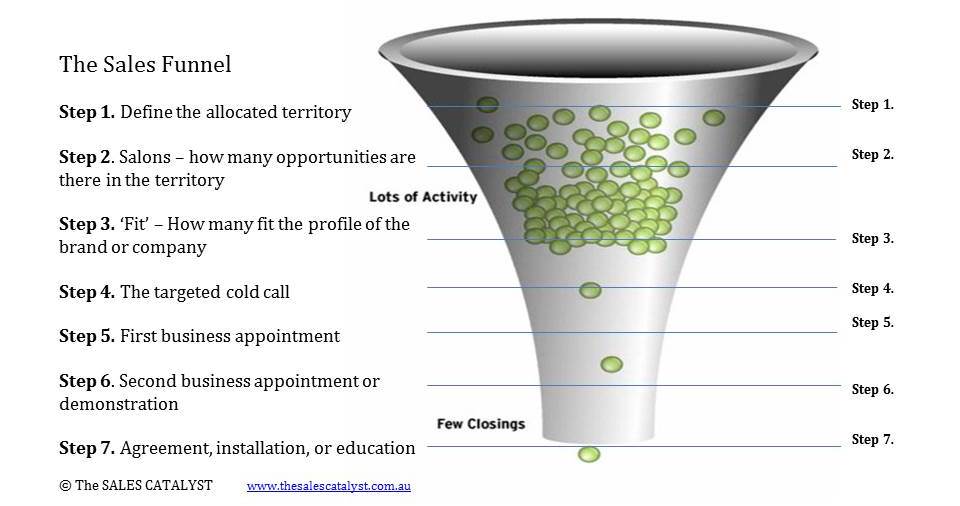Article
Like sand through an hourglass – are your sales slipping away? Part 1

Lately I’ve been focused on funnels.
Sales funnels, to be exact.
And you know what? Most of them leak.
I’m not talking the boat-sinking kind of leak, but a slow trickle – like sand through an hourglass.
It’s the type you don’t notice until it’s too late … and then all your sand’s gone.
And with it, of course, go your sales results for the month.
Because no new accounts, means no pipeline fill, right?
Know how to fix that?
It’s simple.
Work your way through a sales funnel formula and you’ll quickly see where your leaks are happening.
The sales funnel formula is F = Q x HR
Funnel = Quota x Hit Rate
Let’s use some hypothetical numbers to make the picture even clearer …
Quota = 4 new accounts per month
Hit Rate = 1:10 (10% success)
therefore
Funnel = 4 x 10 = 40
For this funnel to be active and healthy, it requires 40 new prospects per month to be put into the top of the funnel.
And then what shakes out the bottom of the funnel you say? It should be 4 new accounts.
But it isn’t happening … is it?
I can already hear the echo …“It’s a numbers game, just do more calls!”
Ah NO. Don’t do more calls.
Do BETTER calls.
The key lies in redefining the territory sales plan and honing the sales team’s cold call engagement skills. So let’s start.
Fundamentally, there are 7 steps to a sales funnel. Every step is important and totally reliant on the other for your overall success.

Step 1: Territory
This is often just a geographical carving up of the state or a practical geographical patch.
Step 2: Salons
It’s vital to get this right. How many opportunities are there within the total territory? Once quantified, compare it to the company’s existing (or planned) distribution penetration.
If the territory is lower than the company average distribution, it may need to be budgeted for a higher monthly number of new accounts. Conversely, if the territory is already higher than the company average, then its budgeted target for new accounts may be lower.
Step 3: The ‘Fit’
More often than not, this step challenges most sales people.
Why? Because they see any and every salon as a suspect. It’s only once they walk through the door that they find out if the business is actually a prospect.
However, taking this traditional ‘suspect’ approach produces the highest level of rejection, and leads to the greatest level of demotivation in your sales reps. I call this the ‘path of most resistance’ and it’s the exact reason why your sales team struggles with doing cold calls.
The ideal approach is to find the ‘path of least resistance.’ This requires you to clearly identify what attributes are a good fit for your brand. Is it salon positioning, shopping centre, off street, highly visible or perhaps its size, number of staff, number of retail brands, or particular brands stocked?
Step 4: The cold call
The most challenging step of all – the cold call – is the step where most sales people flip-flop between acceptance and rejection.
This happens when they push to engage the buyer instead of establishing a conversation loop where the buyer is engaging them …
More on that in Part 2!
SUBSCRIBE to the GET to YES Podcast
Selling in the Hair, Beauty & Body Industries
iTunes - Stitcher - Google Play - Omny - Android
TAKE THE GUESSWORK OUT OF YOUR GROWTH
Your business faces unique challenges. In a private Sales Training Program or Workshop, we’ll tailor our proven GET to YES framework to solve them. Let us come to you. We’ll help you understand that asking and listening works better than talking, to grow your sales. Schedule a no-pressure phone call to learn more.